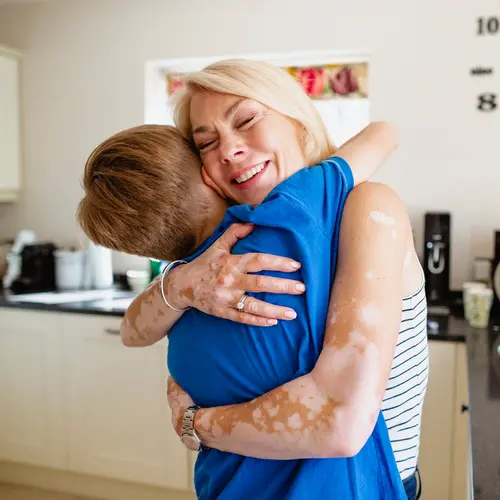Athlete’s foot, or tinea pedis, is a fungal infection of the feet. The fungus typically starts growing between the toes, though the fungus can spread to other parts of the foot. You can contract athlete’s foot from damp surfaces, such as a shower, locker room floor, or swimming pool. Some of the most common symptoms of athlete’s foot are:
- The appearance of a scaly red rash
- Itching
- Blisters or ulcers
- Chronic dryness
- Scaling
Some people end up developing other, less common complications, such as:
- Moist, peeling skin
- A white, greenish, or yellowish discoloration
- Thickened skin
- Painful fissures in the skin
- An unpleasant smell
While locations like showers or locker rooms are the most common way of contracting athlete’s foot, there are other factors that could cause you to contract athlete’s foot. These other factors include:
- Wearing tight footwear
- Wearing damp socks
- Not drying feet thoroughly after a shower
- Walking barefoot in a public area
- Sharing linens, rugs, or mats with someone with a fungal infection
Athlete’s foot is also related to other fungal infections like jock itch or ringworm. The same fungus causes each of those infections. You will need to be vigilant about treating athlete’s foot and avoiding risk factors, since athlete’s foot can recur after clearing up.
Complications of Athlete’s Foot
The athlete’s foot fungus can spread to other parts of your body. Scratching or picking at the rash with your hands can result in one or both developing a similar infection. Your toenails could also become infected with athlete’s foot. Once athlete’s foot is inside the nail, it is often more resistant to treatment.
You can also spread athlete’s foot to your groin. It can travel there if you use the same towel in the groin area and on your feet if you have a case of athlete’s foot.
Remedies and Treatments for Athlete’s Foot
Your doctor may be able to diagnose athlete’s foot by examining your feet. They may also ask questions about the length of your symptoms, how the rash has changed over time, and where you may have contracted the infection. The physician may also want to run tests on a skin sample from your feet to rule out any other causes of the fungal infection.
Recommendations for treatment of athlete’s foot for milder cases can include using an antifungal product like an over-the-counter cream, powder, ointment, or spray. Your doctor may prescribe something stronger if the infection doesn’t respond to over-the-counter treatments. They may also recommend an oral antifungal medication if your case is serious.
The doctor may also suggest one or more of the following home remedies for athlete’s foot, as well as lifestyle changes that encourage healing and prevent reinfection:
- Keep your feet and toes dry: Try to go barefoot as much as possible. This allows air to circulate between your toes and keep them dry. Make sure to dry the area between your toes thoroughly after taking a shower or bath.
- Change your socks regularly: Avoid wearing the same socks more than once. Change your socks two or more times per day if you find your feet getting sweaty. Consider washing your socks in bleach to kill any remaining bacteria.
- Keep your toenails clipped: Cut your toenails and make sure you keep them clean, so the virus doesn’t have a place to hide before infecting others.
- Alternate your shoes: Try not to wear the same pair of shoes for consecutive days. Alternating your footwear at least every other day gives your shoes more time to dry.
- Wear lighter, more ventilated shoes: Try to wear shoes that don’t cause your feet to get as sweaty. Try to avoid those made of synthetic materials like rubber or vinyl.
- Avoid scratching at your rash: Constantly picking at your rash increases the chances that you will spread athlete’s foot to other parts of your body. Soaking your feet in cool water can provide relief from any itching.
- Use medication as directed: Apply any over-the-counter or prescription antifungal products according to the directions given on the packaging or by your doctor. You may want to keep applying any creams or ointments for a week after it appears the infection has cleared.
- Avoid sharing shoes: Sharing your shoes with others increases the risk of spreading athlete’s foot to others.
Following these guidelines can ease your discomfort, speed up the healing process, and prevent you from spreading athlete’s foot to others.
When to See a Doctor
You may wish to see a doctor if you find yourself with a rash on your foot that does not clear up after two weeks or respond to over-the-counter antifungal products. People with diabetes should make their doctor aware of any persistent infection on their feet. Notify your doctor if you have a case of athlete’s foot that presents symptoms like swelling, redness, drainage, or a fever.

